![]()
|
Dunn, Bennett & Co |
Location and period of operation:
|
Dunn,
Bennett & Co |
Burslem |
1876 (78?) |
1983 |
|
Manufacturer of earthenware and ironstone at a number of sites, originally in Hanley and then (from 1886) in Burslem, Stoke-on-Trent.
|
Works occupied by Dunn Bennett:-
|

Dunn, Bennett
& Co.
Boothen Works, Brook Street, Hanley
The Pottery Gazette, American and Canadian Edition, January 1st 1880
Initials used on ware for identification:
D. B. & CO.
D. B. & CO. LTD
[LTD from 1907 onward]
click the following for more information >>>>
 The Hill Works - occupied by Dunn Bennett from 1886 |
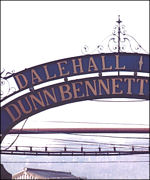 The Dalehall Works - occupied by Dunn Bennett from 1937 |
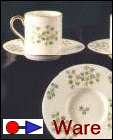
Dunn Bennett ware |

Dunn Bennett marks & dates |

The Dalehall Works of Dunn Bennett & Co
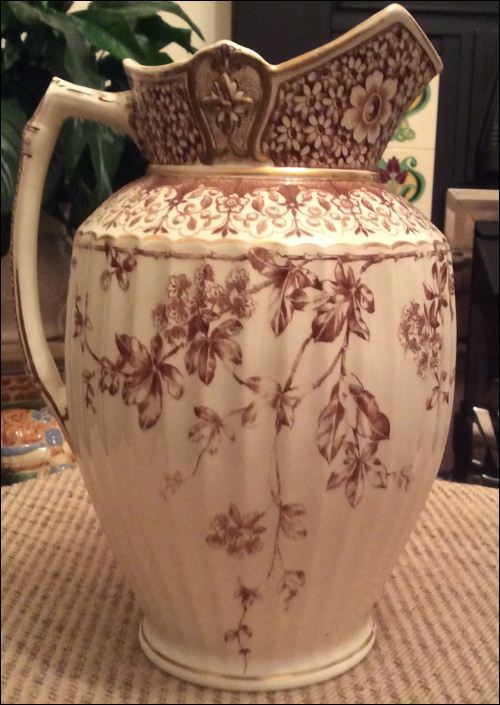 |
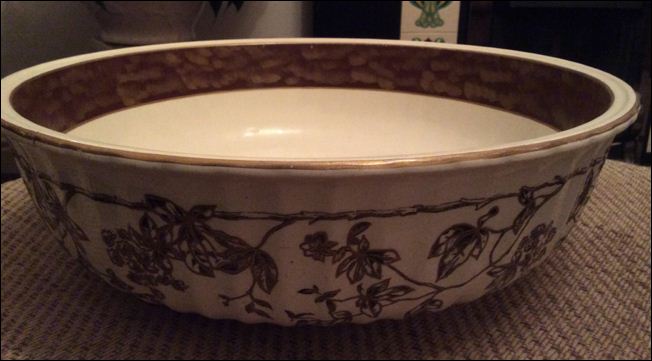
c. 1886-91 early marks at the Hill Works incorporated a Bee Hive |
Dunn, Bennett & Co - wash bowl & jug in the ARGOSY pattern
photos courtesy: Alan Williams
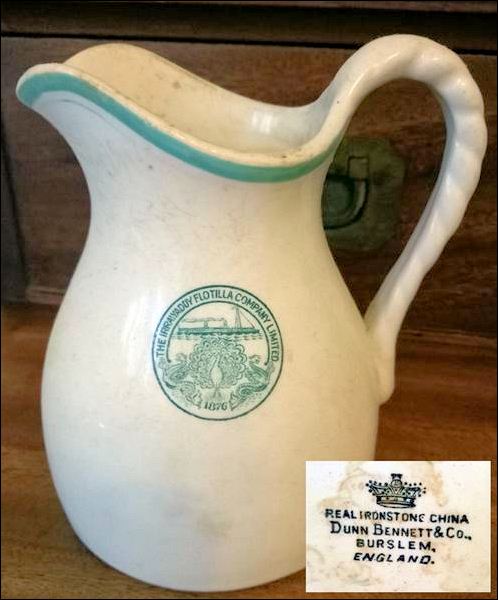
Ironstone catering ware
supplied for the Irrawaddy Flotilla Company, Burma
c.1876-1907
photo courtesy: Bob Hudson (jug found in junk shop in Mandalay)
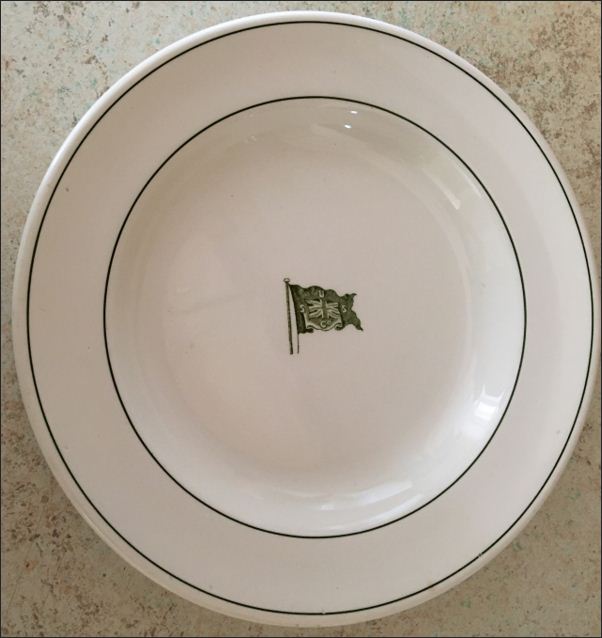 canteen plate produced for the Union Steam Ship Company of New Zealand Limited |
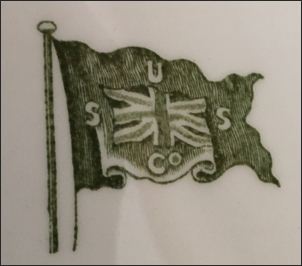
|
photos courtesy: Anne Ratcliffe
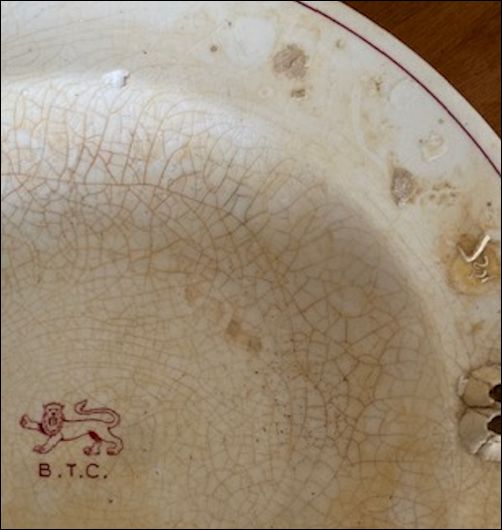 Ships canteen ware supplied by Dunn Bennett for use on the British Tanker Company ships |
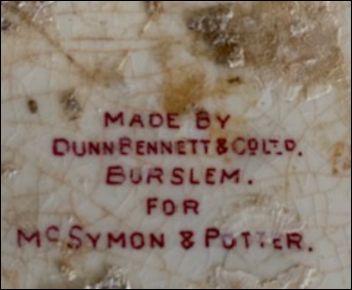 Made by Dunn Bennett & Co Ltd for McSymon & Potter
McSymon & Potter were Ship Chandlers of Glasgow. The initials B.T.C. are those of the British Tanker Company (the forerunner of BP) which was formed in 1915. The logo with the lion passant was used from 1927 to 1954.
|
photo courtesy: Kym Parry
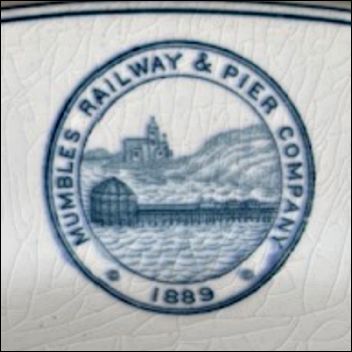 Mumbles Railway & Pier Company 1889 badged dinnerware produce to celebrate the formation of the Company in 1889 |
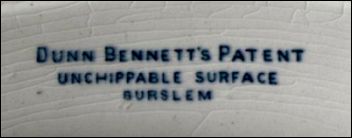 Dunn Bennett's Patent Unchippable Surface Burslem The Swansea and Mumbles Railway,
located in South Wales, UK, was the venue for the world's first passenger horsecar railway service
(1807) Wikipedia article - Swansea and Mumbles Railway |
photos courtesy: Graham Fox
Canteen ware produced for the British Government
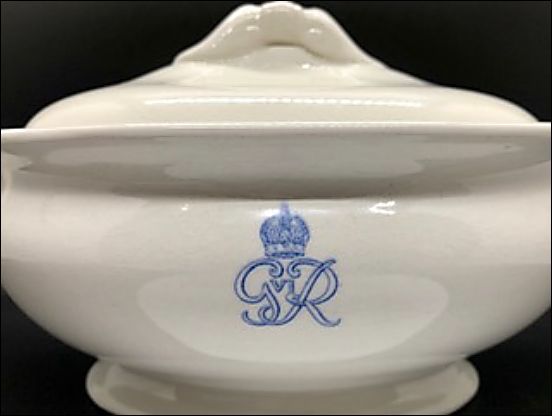 canteen ware - tureen with the Royal Cypher GR VI George VI the King of the United Kingdom |
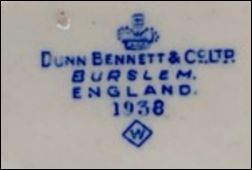 Dunn Bennett & Co Ltd Burslem England 1938 W |
photos courtesy: Nick Coviello
also
see example made by Ashworth &
Bros
|
The tureen shown was produced for and supplied to the British Government; it was ultimately property of the Crown/Government, hence the GR-VI cypher. Dunn Bennett (and others) were given government contracts throughout the late 1930s and into the 1940s (WWII) and produced canteen ware - most likely for the armed services. The ‘W’ within the diamond most likely relates to the products being commissioned and produced for the Office of Works (until 1939) and the Minister of Works (post 1940). This mark is there to distinguish the piece from being normal ‘utilitarian’ ware for public sale or belonging to anyone organisation. |
Questions, comments, contributions? email: Steve Birks